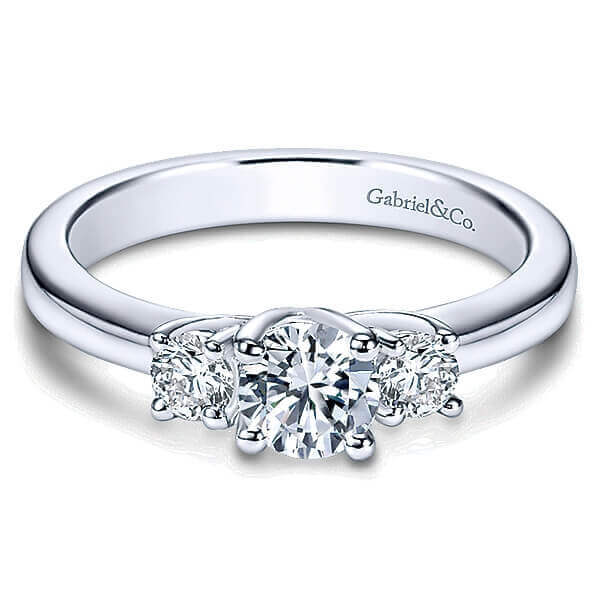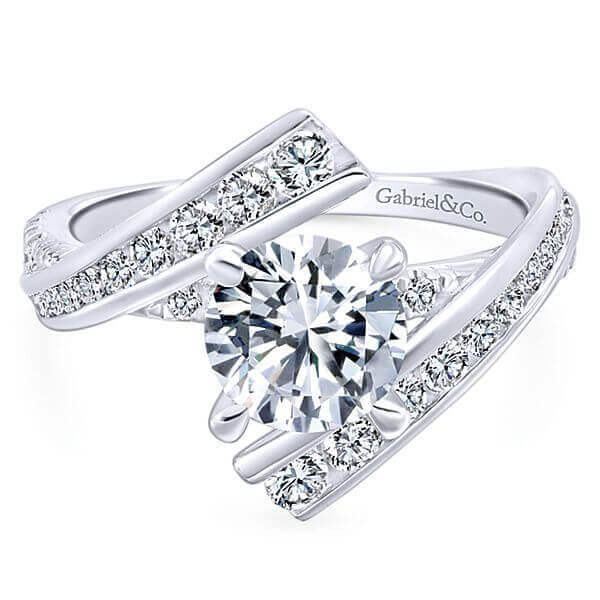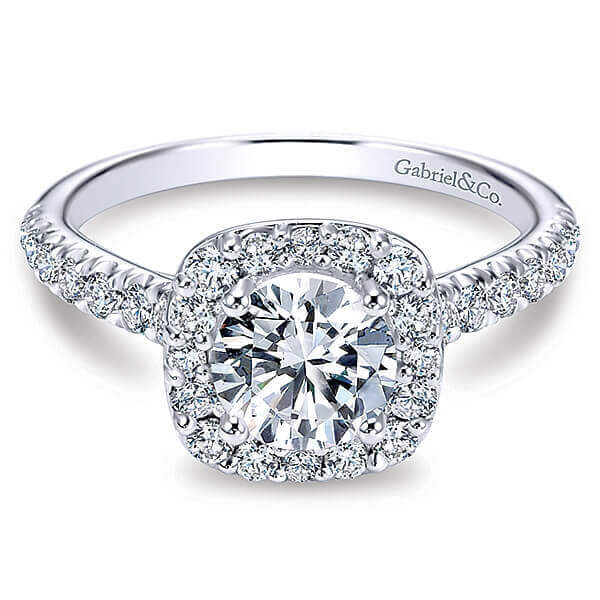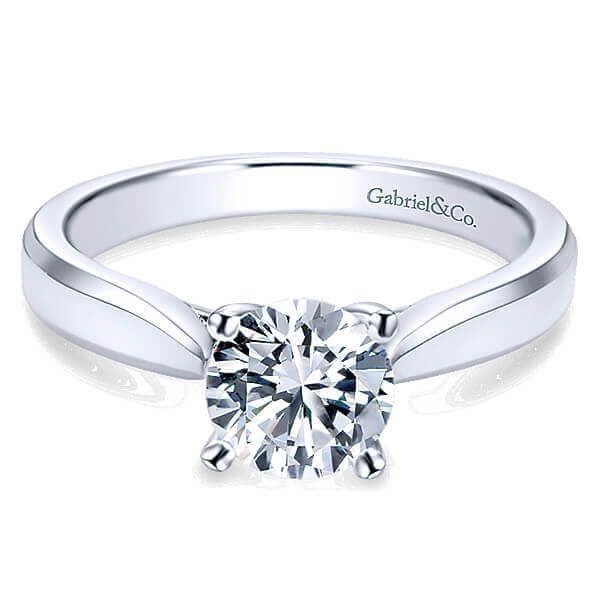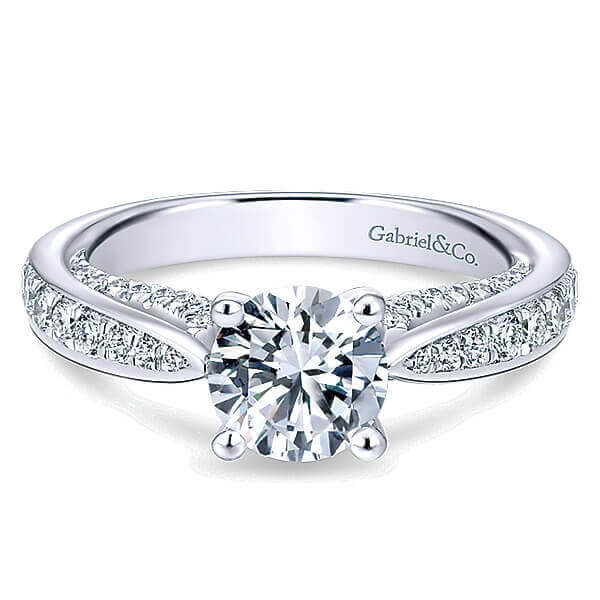THE 4Cs
the 4Cs of Diamond Quality is the universal method for assessing the quality of any diamond.
- DIAMOND COLOR
- DIAMOND CLARITY
- DIAMOND CUT
- DIAMOND CARAT WEIGHT
-
DIAMOND COLOR
Diamond Color Actually Means Lack of Color The diamond color evaluation of most gem-quality diamonds is based on the absence of color. A chemically pure and structurally perfect diamond has no hue, like a drop of pure water, and consequently, a higher value. GIA's D-to-Z diamond color-grading system measures the degree of colorlessness by comparing a stone under controlled lighting and precise viewing conditions to masterstones stones of established color value.GIA's diamond D-to-Z color-grading scale is the industry's most widely accepted grading system. The scale begins with the letter D, representing colorless, and continues, with increasing presence of color, to the letter Z.Many of these color distinctions are so subtle that they are invisible to the untrained eye; however, these distinctions make a very big difference in diamond quality and price.
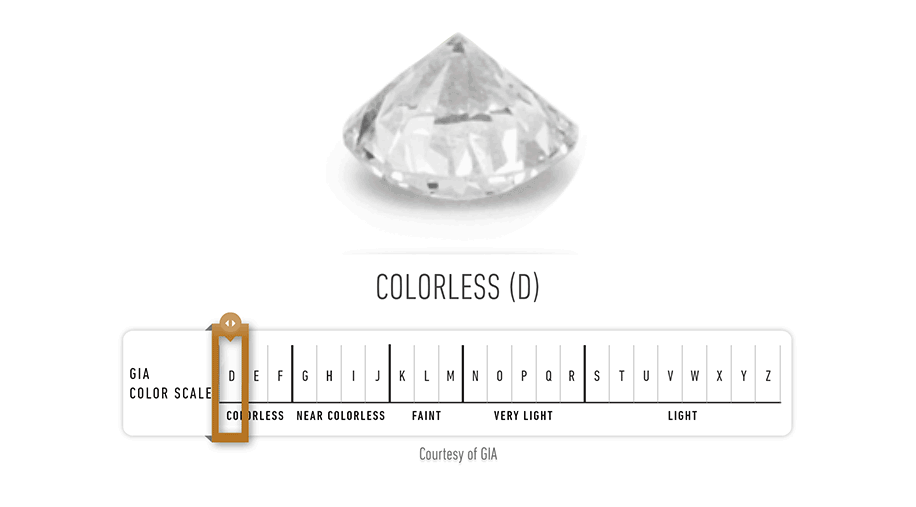
-
DIAMOND CLARITY
Diamond Clarity Refers to the Absence of Inclusions and Blemishes Natural diamonds are the result of carbon exposed to tremendous heat and pressure deep in the earth. This process can result in a variety of internal characteristics called 'inclusions' and external characteristics called 'blemishes.'The GIA Diamond Clarity Scale has 6 categories, some of which are divided, for a total of 11 specific grades.Flawless (FL)No inclusions and no blemishes visible under 10x magnificationInternally Flawless (IF)No inclusions visible under 10x magnificationVery, Very Slightly Included (VVS1 and VVS2)Inclusions so slight they are difficult for a skilled grader to see under 10x magnificationVery Slightly Included (VS1 and VS2)Inclusions are observed with effort under 10x magnification, but can be characterized as minorSlightly Included (SI1 and SI2)Inclusions are noticeable under 10x magnificationIncluded (I1, I2, and I3)Inclusions are obvious under 10x magnification which may affect transparency and brilliance
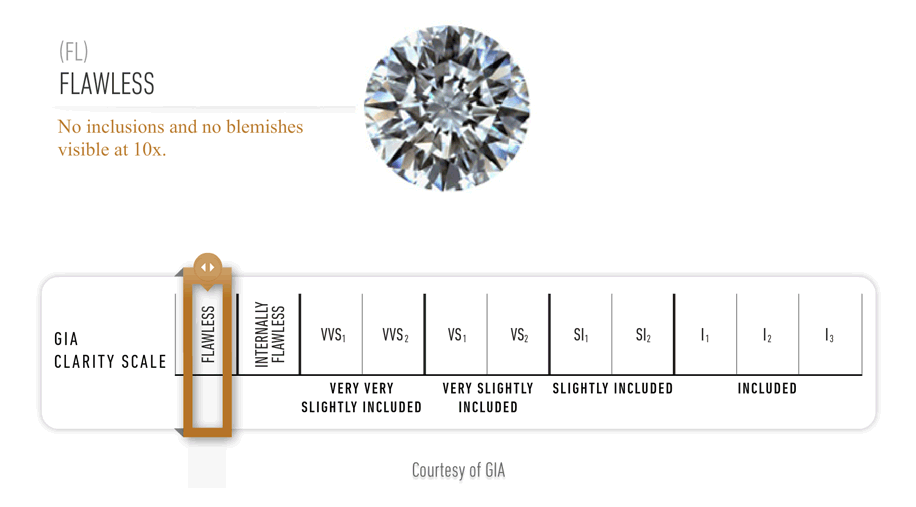
-
DIAMOND CUT
A Diamond's Cut Unleashes Its Light. Diamonds are renowned for their ability to transmit light and sparkle so intensely. We often think of a diamond's cut as shape (round, emerald, pear), but a diamond's cut grade is really about how well a diamond's facets interact with light.Precise artistry and workmanship are required to fashion a stone so its proportions, symmetry, and polish deliver the magnificent return of light only possible in a diamond.

-
DIAMOND CARAT WEIGHT
Diamond carat weight is the measurement of how much a diamond weighs. A metric "carat" is defined as 200 milligrams.Each carat can be subdivided into 100 'points.' This allows very precise measurements to the hundredth decimal place. A jeweler may describe the weight of a diamond below one carat by its 'points' alone. For instance, the jeweler may refer to a diamond that weighs 0.25 carats as a 'twenty-five pointer.' Diamond weights greater than one carat are expressed in carats and decimals. A 1.08 carat stone would be described as 'one point oh eight carats.'
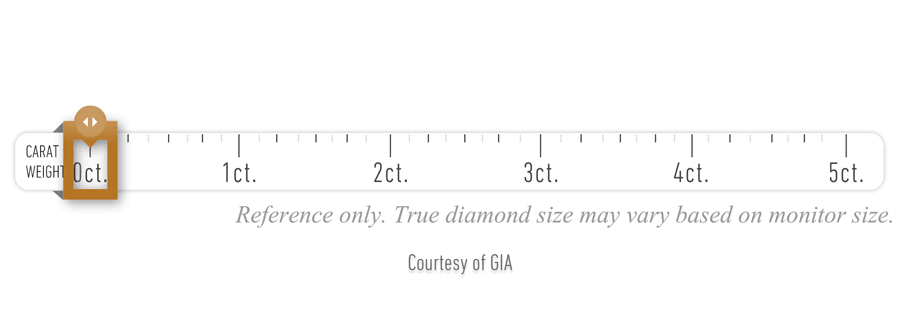
DIAMOND COLOR
DIAMOND COLOR
Diamond Color Actually Means Lack of Color The diamond color evaluation of most gem-quality diamonds is based on the absence of color. A chemically pure and structurally perfect diamond has no hue, like a drop of pure water, and consequently, a higher value. GIA's D-to-Z diamond color-grading system measures the degree of colorlessness by comparing a stone under controlled lighting and precise viewing conditions to masterstones stones of established color value.GIA's diamond D-to-Z color-grading scale is the industry's most widely accepted grading system. The scale begins with the letter D, representing colorless, and continues, with increasing presence of color, to the letter Z.Many of these color distinctions are so subtle that they are invisible to the untrained eye; however, these distinctions make a very big difference in diamond quality and price.

DIAMOND CLARITY
DIAMOND CLARITY
Diamond Clarity Refers to the Absence of Inclusions and Blemishes Natural diamonds are the result of carbon exposed to tremendous heat and pressure deep in the earth. This process can result in a variety of internal characteristics called 'inclusions' and external characteristics called 'blemishes.'The GIA Diamond Clarity Scale has 6 categories, some of which are divided, for a total of 11 specific grades.Flawless (FL)No inclusions and no blemishes visible under 10x magnificationInternally Flawless (IF)No inclusions visible under 10x magnificationVery, Very Slightly Included (VVS1 and VVS2)Inclusions so slight they are difficult for a skilled grader to see under 10x magnificationVery Slightly Included (VS1 and VS2)Inclusions are observed with effort under 10x magnification, but can be characterized as minorSlightly Included (SI1 and SI2)Inclusions are noticeable under 10x magnificationIncluded (I1, I2, and I3)Inclusions are obvious under 10x magnification which may affect transparency and brilliance

DIAMOND CUT
DIAMOND CUT
A Diamond's Cut Unleashes Its Light. Diamonds are renowned for their ability to transmit light and sparkle so intensely. We often think of a diamond's cut as shape (round, emerald, pear), but a diamond's cut grade is really about how well a diamond's facets interact with light.Precise artistry and workmanship are required to fashion a stone so its proportions, symmetry, and polish deliver the magnificent return of light only possible in a diamond.

DIAMOND CARAT WEIGHT
DIAMOND CARAT WEIGHT
Diamond carat weight is the measurement of how much a diamond weighs. A metric "carat" is defined as 200 milligrams.Each carat can be subdivided into 100 'points.' This allows very precise measurements to the hundredth decimal place. A jeweler may describe the weight of a diamond below one carat by its 'points' alone. For instance, the jeweler may refer to a diamond that weighs 0.25 carats as a 'twenty-five pointer.' Diamond weights greater than one carat are expressed in carats and decimals. A 1.08 carat stone would be described as 'one point oh eight carats.'


